Browse »
Home » Archives for January 2012
Cancer prevention is easier than you think. With a few simple lifestyle changes, you can drastically reduce your risk of many types of cancer. Many factors play a role in cancer development, but the good news is that most can be avoided.
1. Avoid Smoking and Exposure to Smoke
Smoking is the most significant cancer risk factor that we can reduce. It is responsible for not only lung cancer, but many other types of cancer. One of the best ways to prevent cancer is to quit smoking or never start. As soon as you quit, and it's never too late, your body reaps the benefits of being tobacco-free.
Avoiding secondhand smoke is also a way to prevent cancer. Secondhand smoke is the smoke exhaled from a smoker or a lit cigarette, pipe or cigar. This smoke contains more than 60 known carcinogens". These carcinogens interrupt normal cell development. This interference is what ignites cancer development.
2. Practice Sun Safety and Recognize When Skin Changes Occur
Did you know that over one million Americans are diagnosed with skin cancer each year? Skin cancer is the most common type of cancer among men and women, and it accounts for about half of all cancer diagnoses. The good news is that skin cancer is one of the most preventable types of cancer.
The first step in preventing skin cancer is to avoid UV ray exposure. We can do this by wearing sunscreen, avoiding mid-day sun, wearing protective clothing when outdoors, and by staying away from tanning beds. Here are some tips to get you started.
3. Eat Your Fruits and Veggies
A well-balanced diet is advantageous for many reasons. A diet rich in fruits and vegetables greatly reduces your risk of developing cancer and many other conditions.
Fruits and vegetables contain antioxidants, which help repair our damaged cells. Green, orange and yellow fruits and vegetables are your best bet to help prevent cancer. Studies also show that dark fruits, like blueberries and grapes, may also have anti-cancer properties.
Cruciferous vegetables such as broccoli and cauliflower appear to pack a powerful punch at preventing cancer, according to numerous studies. Other cruciferous vegetables include bok choy, Brussel sprouts, and cabbage.
4. Limit Red Meat and Animal Fat
Numerous studies show that a diet high in animal fat increases the risk for several types of cancer, particularly colon cancer. Red meat contains much more fat than poultry and fish, so reducing the amount of red meat in your diet may help to prevent cancer. A diet high in fat also is major cause of obesity, which is a risk factor for many types of cancer.
5. Limit Your Alcohol Intake
Drinking excessive amounts of alcohol regularly increases your risk factor for many types of cancer. Studies suggest that men who consume 2 alcoholic drinks per day and women who have 1 alcoholic drink per day significantly increase their risk factors for certain types of cancer.
6. Exercise for Cancer Prevention
Did you know that when you are exercise, you are reducing your risk for many types of cancer? The American Cancer Society recommends exercising 30 or minutes, at least 5 days a week for cancer prevention. Exercising doesn't have to mean going to the gym to lift weights. There are plenty of ways to get exercise into your day. Check out these 10 ways to prevent cancer through exercise for great gym alternatives.
7. Know Your Personal and Family Medical History
Knowing your family history of cancer is important to properly assess your risk factor for certain types of cancer. We know that cancers like breast, colon, ovarian, and possibly other types can be hereditary.
If you know that a certain type of cancer runs in your family, let your doctor know. Together, you can determine a proper screening plan and assess your true risk. Genetic testing and counseling is available and may be recommended based on your family's medical history.
8. Know What You're Being Exposed to in Your Work Environment
Chemicals in the workplace may increase your risk of developing many types of cancer, including kidney cancer and bladder cancer. If you are exposed to fumes, dust, chemicals, etc. in the workplace, you have a legal right to know what you are being exposed to. Gasoline, diesel exhaust, arsenic, beryllium, vinyl chloride, nickel chromates, coal products, mustard gas, and chloromethyl ethers are all carcinogens and can be found in some work environments. Talk to your employer about limiting exposure.
9. Practice Safe Sex
You may wonder what sex has to do with cancer. Unsafe sex can result in the infection of the human papillomairus (HPV), a known cause for cervical cancer and a risk factor for many other types of cancer. HPV is a common sexually transmitted infection that is spread through sexual, skin-to-skin contact. A vaccine, Gardasil, to prevent HPV was approved by the FDA in 2006 and protects against four strains of HPV that are associated with cervical cancer and other types. HIV/AIDS is also associated with some types of cancers.
10. Get Screened for Cancer Regularly
Cancer screening tests can be useful not only in detecting cancer, but also helping prevent it. Screening tests like the colonoscopy and Pap smear can detect abnormal cellular changes before they turn cancerous. The key to their effectiveness, however, is that they are done regularly.
Other cancer screening tests are available and may be useful for early detection, but not necessarily cancer prevention. Prostate cancer screening through digital rectal exams and PSA tests can help detect prostate cancer early. Mammograms and other imaging tools are also recommended to detect breast cancer in women.
Source
While we all want our hair colorings to turn out perfectly, sometimes mistakes happen. And when a major hair color gaffe happens, you have two choices:
1) Walk around with a totally messed-up dye job, or...
2) Do something to fix the problem.
Assuming you care about your appearance, the second choice is most likely going to be what you pick. This being said, here is a look at some different things you should keep in mind when fixing a hair coloring gone wrong.
Fix the Problem Quickly
The biggest thing you need to keep in mind when hair color doesn’t turn out the way you expected is that the quicker you get to the problem, the more chance you have of fixing it. In the best case scenario, you will fix a bad dye job within 24 hours of the coloring; in the worst case scenario, you’ll attempt to correct things within 72 hours.
Letting the dye sit in your hair any longer than this will let the unwanted color penetrate your cuticles. Now this isn’t to say that it’s impossible to remove or reduce the color after 72 hours, but you’ll need to invest a lot more time and money into the matter if you don’t handle it quickly.
Hair Color Correction Kit
Assuming you’re going to fix a hair color mishap yourself, the best way to do this is by purchasing a hair correction kit. When buying the color corrector, make sure that you get the whole deal, including gloves, a shower cap, conditioner, color reducer, a color brush and processing lotion. In addition to all of this, you should get a set of instructions to follow with the kit, but we’ll also cover what to do below.
Most corrector packages call for you to mix the conditioner and color reducer together; once the mixture is created, you put the mix on your head with the color brush. As you apply the mixture, make sure to move the brush from your roots to the tips. The next step involves gently massaging the color reducer into your hair.
When you’ve finished with the reducer, you need to cover your head with a shower cap, and wait for the allotted amount of time (according to directions). While you’re waiting, you should be doing strand tests to see if the product is actually reducing the color (hopefully it is). If you’re unfamiliar with strand tests, you just need to take a small part of your hair, and wipe away the product to see what color your hair is.
After removing the shower cap, you can apply the processing lotion and let it sit in your hair. Once the processing lotion has run its course, you can jump in the shower to rinse the product out.
Visiting the Hair Salon
If your hair was colored at a salon, chances are that you’ll be able to re-visit the salon and get the color removed/corrected free of charge. These chances improve greatly when you contact the salon within the first 48 hours after the coloring.
Now sometimes you may lose confidence in the original salon that colored your hair. In this instance, you can always visit another salon to have the problem taken care of. Better yet, you can go to a color correction specialist and get really good results! In any case, just don’t try to redo a professionally-done job by yourself.
Re-Dyeing your Hair
Instead of trying to remove or reduce color, many people opt for re-dyeing their hair. This is an especially popular choice for those who have used a permanent product, and can’t use conventional means to take the dye out. But keep in mind that you’ll most likely have to visit a professional if your hair was colored a darker color.
When it comes time to re-dye your hair, the longer you wait to perform the dyeing, the better off you’ll be. In fact, you should try using a conditioner for color-treated hair before running out and buying more dye. After all, your hair is in a very sensitive state, and re-dyeing it too quickly can cause the hair to become even more dry and brittle. In addition to this, re-dyeing right after the initial dye job can lead to your hair either absorbing too much or too little of the color.
So when you take all of this into account, it’s very important to look at the health of your hair before deciding to re-dye it. Assuming your hair is dry and brittle, it’d be a good idea to wait at least a month (preferably two months) before dyeing all over again. If the health of your hair is good, you are safe to re-dye it within 2-3 weeks.
Letting Hair Color Fade Naturally
In some cases, removing the hair color isn’t an option. Maybe you waited too long and a stylist won’t fix the bad dye job, or you tried several at-home solutions and the product still won’t come out. Whatever your situation is, you may be in the unfortunate position of having to wait until your hair color fades naturally.
If you’re wondering how long this will take, it all depends on the hair color you chose and the product that was used. For example, if you dyed your hair blonde with a cheaper product, you would probably be waiting 2-3 months before the color is completely gone. Of course, it will fade before that, but this is a general estimate.
Assuming you used a permanent hair color product, your color is not meant to wash out or fade, so your best bet is to get it cut short and wait for the roots to grow in. Once this happens and your hair has grown out more, you can visit the salon and get your hair cut again. But hopefully you won’t have to go through this, and you’re able to use a solution that doesn’t require waiting on the hair color to fade.
Asian Under-23 Best XI for 2011
Formation: 4-4-2
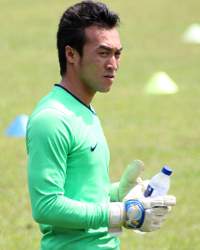 | Goalkeeper - Khairul Fahmi Che Mat
Kelantan FA and Malaysia
Khairul Fahmi Che Mat was largely an iconic figure in Malaysian football in 2011 with his impeccable performances for both club and country. The 22-year-old goalkeeper was impressive in Kelantan's Super League triumph, while also being a consistent figure between the sticks, during Malaysia's SEA Games win.
He was also voted as Goal.com's Malaysian Player of the Year and with 2012 up and running, expect further developments from a man already regarded as the best goalkeeper in South-East Asia. |
 | Right-back - Hiroki Sakai
Kashiwa Reysol and Japan
Only 21 years old but Hiroki Sakai is already being regarded as a gem of his kind in Japan. Sakai was hugely influential in Kashiwa Reysol's title-winning 2011 campaign, making that right-back spot his own.
Made his debut in the Japan Under-22 team in 2011, scoring one goal in seven appearances so far. Sakai was even voted as the J-League Rookie of the Year for his brilliant performances. |
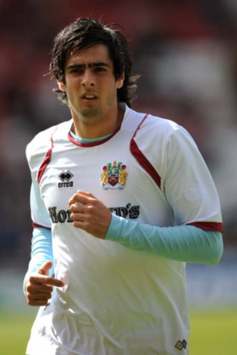 | Centre-back - Rhys Williams
Middlesbrough and Australia
Missed 11 months in 2010 and early 2011 due to a pelvic injury, but upon his return in March, Rhys Williams helped Middlesbrough avoid relegation with some sublime performances in defence and went on to be linked with Premier League club Bolton.
He's been a key for his club's impressive 2011-12 campaign where they are bidding for promotion, while he's returned to the national team set-up pushing for a regular run at right-back. |
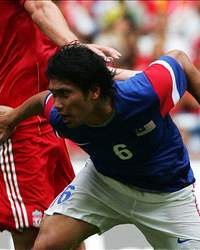 | Centre-back - Fadhli Shas
Harimau Muda A and Malaysia
Fadhli Shas was part of the Malaysian U-23 team that received great reviews in 2011. Was integral in Malaysia's run into the final stages of the Olympic qualifiers and also helped them win the SEA Games gold medal in football. His exquisite displays at the back prompted Slovakian club ViOn Moravce to snap him up on loan for three months in September last year.
Only 20 years of age, he looks to be a great prospect for Malaysia at centre back. |
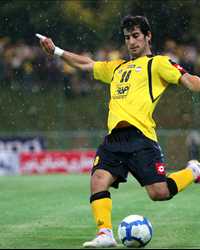 | Left-back - Ehsan Hajsafi
Sepahan/Tractor Sazi and Iran
The 21-year-old defender/midfielder had a stellar year with both club and country, playing a big part for Iran as they reached the quarter-finals of the Asian Cup before winning the 2010-11 Iranian title with Sepahan.
Hajsafi moved to emerging Iranian power club Tractor Sazi for the 2011-12 season where he has continued his fine showing whilst taking his national team caps to 41 with solid displays for his country in their successful World Cup qualifying campaign. |
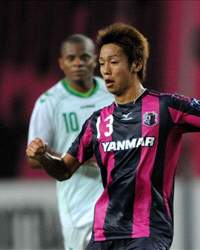 | Right midfield - Hiroshi Kiyotake
Cerezo Osaka and JapanHiroshi Kiyotake has been a fulfilling presence in the Cerezo Osaka midfield, being an absolute threat for the opposition. He was equally impressive for the Japan U-22 team, who are currently top of their group in the final round of the Olympic qualifiers.
As a result of his solid outings in the J-League, he was nominated in their Team of the Year list for 2011. |
 | Centre midfield - Ki Sung-Yueng
Celtic and South Korea
There's no need to explain this selection in detail because Ki Sung-Yueng is by far one of the best midfielders in South Korea. Solid and composed, Ki's presence in the team is absolutely indubitable and his influence in Celtic's bid for the Scottish Premier League title is justified as well.
As a result of his magnificent outings this year, Ki has been voted as the KFA Player of the Year by South Korean fans. |
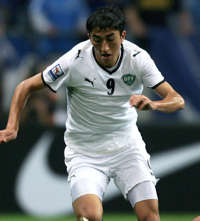 | Centre midfield - Odil Ahmedov
Anzhi Makhachkala and Uzbekistan
Odil Ahmedov had to be in our midfield after the young star had a wonderful Asian Cup with his country. He was rock solid at the back and in a deep-lying midfield role and scored one of the goals of the tournament.
Moved to Russian big spenders Anzhi in February and has been a regular fixture in their side, prompting a link with Arsenal. He was also voted as the best player at Anzhi for 2011. |
 | Left midfield - Andik Vermansyah
Persebaya 1927 and Indonesia
Dubbed as the 'Indonesian Messi', Andik Vermansyah has been a revelation for both Indonesia U-23 and his club Persebaya 1927. The 20-year-old midfielder also showed great potential during a friendly match against LA Galaxy this year, where David Beckham heaped praise on him afterwards.
His terrific displays have alerted several European clubs with Benfica being rumoured to be interested in the Indonesian sensation. |
 | Striker - Ji Dong-Won
Chunnam Dragons/Sunderland and South KoreaThe 20-year-old emerged for the Taeguk Warriors at the 2011 Asian Cup as a teenager where he scored four goals for his nation, who finished third. His form at club level with Chunnam in the K-League wasn't nearly as prolific but good enough to see him linked with Newcastle, PSV Eindhoven and Sunderland.
He ultimately opted to move to the latter and has since made numerous appearances for the Black Cats, also netting against giants Chelsea and Manchester City. |
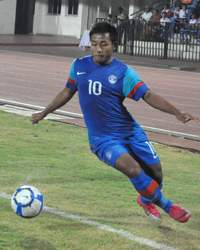 | Striker - Jeje Lalpekhlua
Pune FC and India
Jeje Lalpekhlua forced himself into the national team reckoning with his stellar performances for Indian Arrows in the I-League last season, when he finished as the top scorer amongst Indians with 12 goals. He was also awarded the FPAI Young Player Award for 2010-11 and has joined Pune FC since.
For the national team, having started off with four goals in three games during the AFC Challenge Cup qualifiers, he has an average of a goal every two matches. Jeje also played a vital part in India’s SAFF Championship triumph recently. |
SUBSTITUTES
| Goalkeeper | Defender | Defender | Midfielder |

Neil Etheridge
(PHILIPPINES) | 
M. Muzeper
(CHINA) | 
Hong Chul
(SOUTH KOREA) | 
Saad Abdul-Amir (IRAQ) |
| Midfielder | Striker | Striker |

Seo Jung-Jin
(SOUTH KOREA) |  Karim Ansarifard Karim Ansarifard
(IRAN) | 
Zhang Chengdong
(CHINA) |

















 Karim Ansarifard
Karim Ansarifard 
 Previous Article
Previous Article
